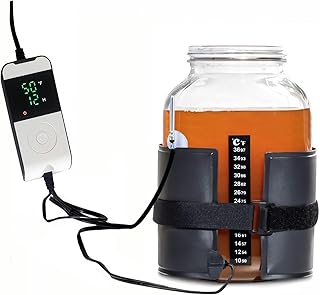Understanding Natural Yeast Collection
Collecting yeast naturally is a fascinating process that involves harnessing the microorganisms present in the environment. Yeast is a type of fungus that plays a crucial role in fermentation, and understanding how to collect it can enhance your baking and brewing endeavors. The natural collection of yeast can be achieved through various methods, each offering unique characteristics and flavors to your final product.
Choosing the Right Environment
To successfully collect yeast naturally, it is essential to choose the right environment. Yeast thrives in areas with organic matter, such as fruit trees, flowers, and even on the surface of grains. The best time to collect yeast is during warm weather when yeast populations are at their peak. Look for locations that are free from pesticides and chemicals to ensure a healthy yeast culture.
Gathering Materials for Collection
Before you begin the collection process, gather the necessary materials. You will need a clean container, such as a glass jar, and a breathable cover like cheesecloth or a coffee filter. These materials will help you capture the yeast while allowing air to circulate, which is vital for the yeast’s growth. Make sure all your tools are sanitized to prevent contamination.
Collecting Wild Yeast from Fruits
One of the most effective ways to collect yeast naturally is by using fruits. Ripe fruits, especially those with a natural bloom, are excellent sources of wild yeast. Simply wash the fruit lightly, then place it in your container. You can also mash the fruit to release its juices, which will help attract yeast. Cover the container and let it sit at room temperature for several days.
Using Flour and Water for Yeast Capture
Another popular method for collecting yeast naturally involves using a mixture of flour and water. Combine equal parts of whole grain flour and water in your container to create a paste. This mixture serves as a food source for the yeast. Cover it loosely and leave it in a warm spot for a few days, stirring occasionally to encourage yeast growth.
Get more content like this!
Sign up to receive updates and new terms first hand.
Monitoring Yeast Activity
After a few days, you should start to see bubbles forming in your mixture, indicating that yeast is present and active. This is a sign that your natural yeast collection is successful. You may also notice a pleasant, slightly sour smell, which is characteristic of active yeast. If you do not see any activity after a week, consider starting over with a new batch.
Storing Your Collected Yeast
Once you have successfully collected yeast naturally, it is crucial to store it properly. Transfer the active yeast mixture into a clean jar with a tight-fitting lid. You can refrigerate it to slow down the fermentation process. Make sure to feed your yeast regularly with flour and water to keep it alive and active for future use.
Using Collected Yeast in Baking and Brewing
The yeast you collect can be used in various baking and brewing applications. When using your natural yeast, remember that it may behave differently than commercial yeast. You may need to adjust your recipes and fermentation times accordingly. Experimenting with your collected yeast can lead to unique flavors and textures in your baked goods and beverages.
Benefits of Collecting Yeast Naturally
Collecting yeast naturally offers several benefits. It allows you to create unique flavors that are specific to your environment and ingredients. Additionally, natural yeast can be more resilient and adaptable than commercial strains, leading to better fermentation results. This process also fosters a deeper connection to the ingredients you use, enhancing your overall culinary experience.
Challenges in Natural Yeast Collection
While collecting yeast naturally can be rewarding, it also comes with its challenges. Contamination from unwanted bacteria or molds can occur, which may spoil your yeast culture. It is essential to monitor your collection closely and maintain cleanliness throughout the process. Patience and practice are key to mastering the art of natural yeast collection.
Auto Amazon Links: No products found.


